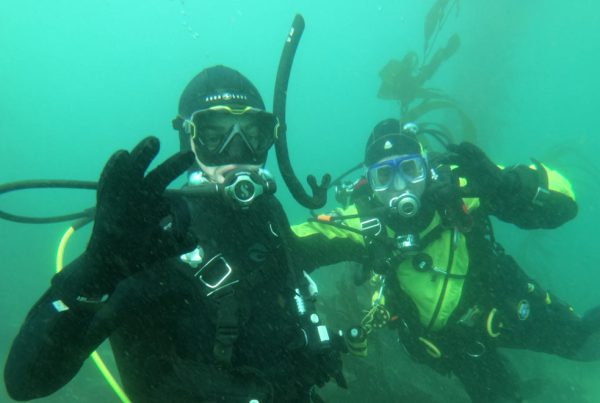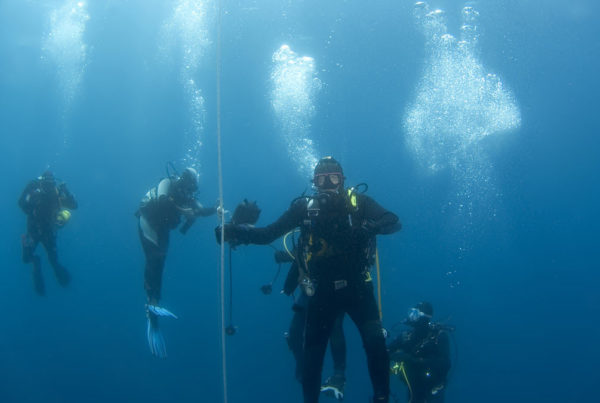Every week dozens of these vessels from Monterey to San Diego head out taking divers to explore beautiful California waters. If you have not already done so, it is time to book a trip on one of these fun boats. Below are a few tips to making your California dive-charter boat experience one of maximum enjoyment.
SIGN UP CORRECTLY
The Internet is great but if you cannot get the answers you want online, CALL! There are several critical points of information you need before you sign up. First, what is the skill level of the dive trip? It can be quite frustrating to be an advanced diver, expecting advanced dives, and end up on a boat with a basic certification class. Worse is to be a beginning diver put on an advanced dive site. You might be tempted push your limits, putting yourself and others in danger. Next, find out what is included in the price of the trip. With some boats, tanks and weights are included, some only tanks. But most include neither.
A few other questions you may want to ask is if credit cards or checks are accepted (for incidentals like air fills, food, and tips), if food and air included (bring extra cash if not), can you bring your own food onboard, and is hunting is allowed (if that affects your dive plans). Ask when you can board and if bunks are available.
Sign up early. Prime dive dates (weekends, holidays and special dive sites) fill up quickly as do special times of year (summer, lobster season opener, etc.). Most sign-ups allow a deposit and payment plan as well as cancellation policy.
PACKING AND PREPARATION
Check your tank fill before all the dive stores close the evening before the departure date. Use a checklist in packing your gear, laying it out head to toe (I actually prefer toe to head). Pack your gear first to last — what you will need first goes in your bag last. Use your wetsuit to pad more delicate gear such as your mask and computer. Don’t forget a spare parts kit that includes (at minimum) a mask strap, fin strap, and tank ‘O’-ring. Carry a separate bag for dry gear such as towel, log book, cell phone and change of clothes. Don’t forget your certification card!
Wear loose, warm clothing. Long, hooded “boat coats” are an excellent choice for staying warm and dry. Shoes should be either warm and water resistant (I love Uggs sprayed with water repellent) or sturdy sandals. On multi-day dive trips, bring a sleeping bag for maximum comfort.
ARRIVAL
Depending on the boat and destination, many boats allow you to board the night before and sleep onboard. This is a good strategy as you will save on sleep time and hotel bills.
Whether you arrive the night before or the morning of departure, arrive early. First, grab a good bunk (if available). The best are the bunks lowest in the boat, closest to the middle and the nearest to the stern. These bunks get the least amount of toss and turn in heavy seas. Stow your gear out of the way of other divers but in a way that is easy for you to reach and keep organized. Set up your gear long before the boat leaves the dock. Put your BCD on the tank, secure and make all necessary adjustments. The regulator should also be installed at this time, hoses secured and pressure checked. If you have camera gear, assemble that is well. It is a lot easier to set up gear on a still boat dockside than at sea on a rocking boat.
All dive boats will have paperwork that needs completion. There will likely be a liability release for the boat, possibly another for the charter group, and the manifest. Print your name legibly.
Finally, if you are arriving late other divers may already be aboard asleep. Be courteous and keep noise to a minimum.
STAY ORGANIZED
You owe it to yourself and the divers around you to keep your gear neat and in order. Work out of your dive bag and keep all your gear in the parameters of your station. Keep the deck clear!
Have your gear ready to go when the diving begins. About 30 minutes before the first dive put on your exposure suit. Masks should be defogged, knife on and straps adjusted. Make sure you and your buddy have a dive plan including current, directions, gear check, emergency procedures, maximum depth, turn around time, etc. The less you have to do just before the dive the better.
Pay attention at all briefings and all roll calls. These are for your safety and diving enjoyment.
DRESSING IN
With your exposure suit on, put on your weight belt (if your weights are not integrated with your BCD) and then your BCD/tank assembly (with the help of your buddy). Put on your mask checking its seal and then your gloves, dominate hand first. Now would be a good time for a last minute gear check — air on – check, quick-connects attached – check, etc. Your fins are last to go on at the gate. Do not walk around deck with your fins on!
WATER ENTRY AND EXIT
Check out with the divemaster. Put your regulator in your mouth and check one more time that your air is on. Also, with your regulator in your mouth should the boat swing back you will not be trapped under the boat with no way to breathe. If the boat is swinging, wait for the boat to swing away from the jump zone. Wait for a clearing in the kelp and make sure no divers are below you. Put a bit of air in your BCD so that you will be positively buoyant. Hold onto your mask and weight belt and giant stride off the boat. The purpose of a giant stride entry is threefold. First, it gets you completely clear of the boat avoiding possible entanglements or bumps. Second, it lessens the impact of the water on your body. And finally, scissors kick as you enter the water and you’ll not submerge until you are fully prepared. Once in the water do a quick check that everything is in order and if yes, turn and give and give a hand-on-head “OK” sign back to the divemaster aboard the boat.
In reboarding the boat perhaps the most important point is to wait your turn. If you are right behind another diver you stand a good risk of getting bonked in the head. Follow the crew’s directions and give them the opportunity to do their job of helping you out of the water in the easiest way possible.
FINAL POINTS
Back on the dive deck, keep all your gear neat and organized working out of your dive bag and/or station. When your diving is complete, stow your gear as quickly as possible so as to make room for others coming divers reboarding.
California dive charter boat crews are some of the best in the world with great service and helpfulness. Show your appreciation with tips at the end of the trip. 10 to 15% of the total cost of the trip is customary for good service.









